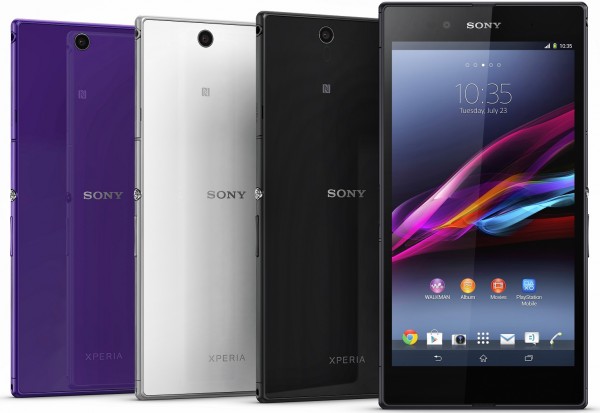
Following Samsung, LG and other makers, today, Sony officially enters the phablet market with the new Xperia Z Ultra. The handset, which is designed to compete with devices like the Galaxy Note II and Optimus G Pro, packs a whopping 6.44-inch display and runs Android 4.2 Jelly Bean.
The Xperia Z Ultra features a TFT "Triluminos" screen with a resolution of 1080 by 1920, which can be used with "any pencil and selected stylus or pen" with a tip diameter larger than one mm. Power comes from a 2.2 GHz quad-core Qualcomm Snapdragon 800 processor backed by 2 GB of RAM and a non-removable 3,000 mAh battery. Like the older Xperia Z, the Xperia Z Ultra complies with the IPX5/8 and IP5X standards for dust and water-proofing.
The handset comes with an 8 MP back-facing camera with HDR and image stabilization, which is capable of 1080p video recording. On the front, the Xperia Z Ultra offers a 2 MP shooter that can also record 1080p video.
The device ships with 16 GB of internal storage (of which only 11 GB are user-accessible) alongside a microSD card slot, that can extend the capacity by a further 64 GB (80 GB total).
Other specs include: HSPA+ and 4G LTE cellular connectivity; Wi-Fi (presumably 802.11 a/b/g/n/ac); Bluetooth 4.0; DLNA; NFC (Near Field Communication); USB 2.0 and the usual array of sensors.
According to Sony, the "Xperia Z Ultra is supremely slim and lightweight", but at 179.4 x 92.2 x 6.5 mm and "just" 212 grams it meets only one of the two claims. By contrast, the Galaxy Note II measures 151.1 x 80.5 x 9.4 mm and weighs 180 grams.
On top of Android 4.2 Jelly Bean, Sony also adds its own branded apps which include Album, Music, Reader and Walkman among others.
The Xperia Z Ultra will be available, in black, purple and white trims, from Q3. There is no word on pricing at the moment.

